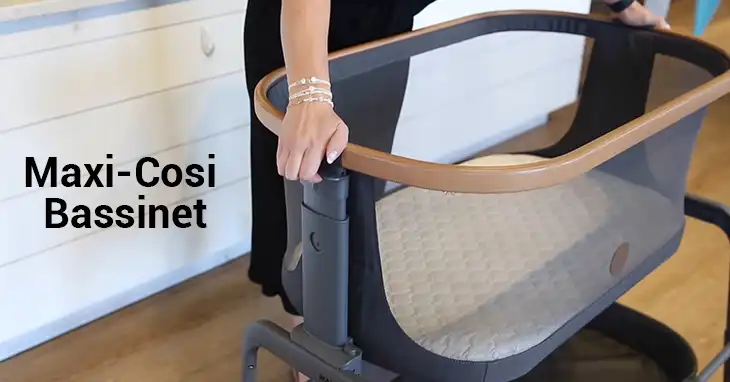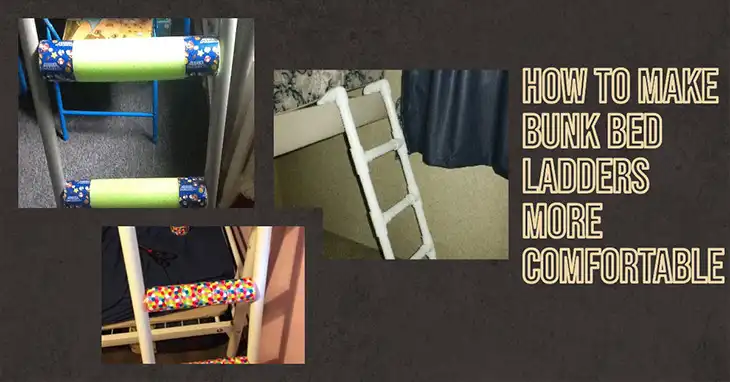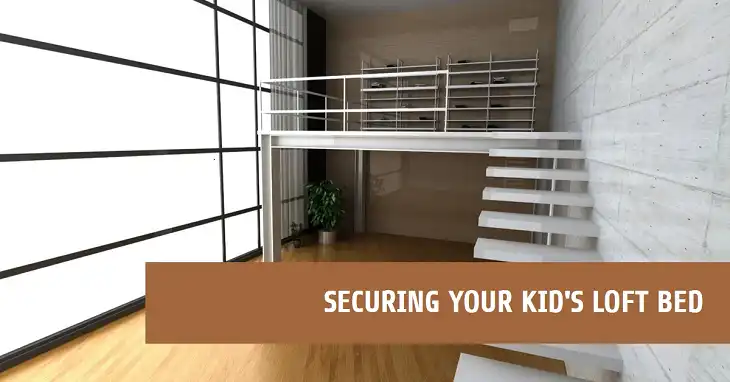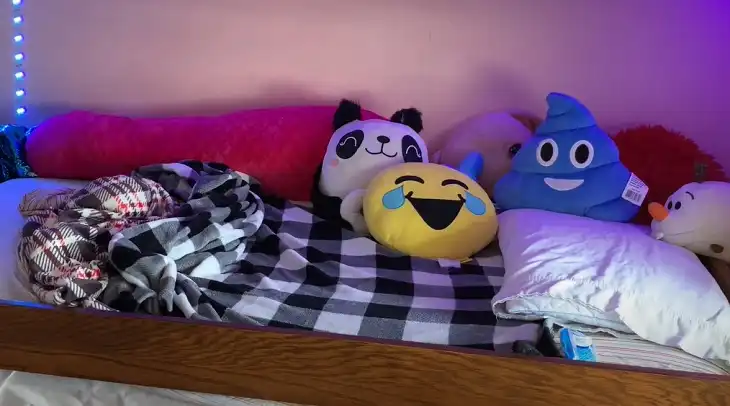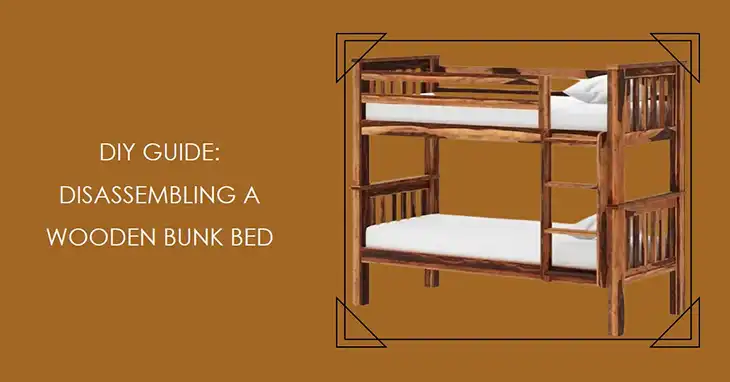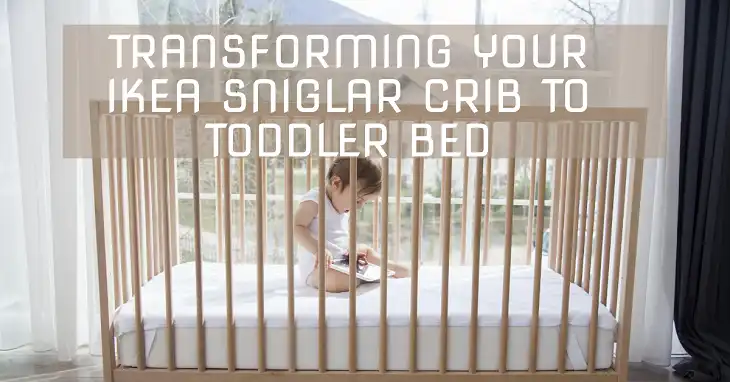Mini Crib vs Crib | Choosing the Right Crib for Baby
Picking the right sleeping space for your baby can be a real head-scratcher, am I right? Mini cribs and regular cribs are two popular options that often leave new parents feeling confused. As a seasoned parent, let me break it down for you. A mini crib is a compact version, perfect for saving space but with a shorter lifespan. On the other hand, a regular crib offers more room for your little one to grow and can even convert into a toddler bed.
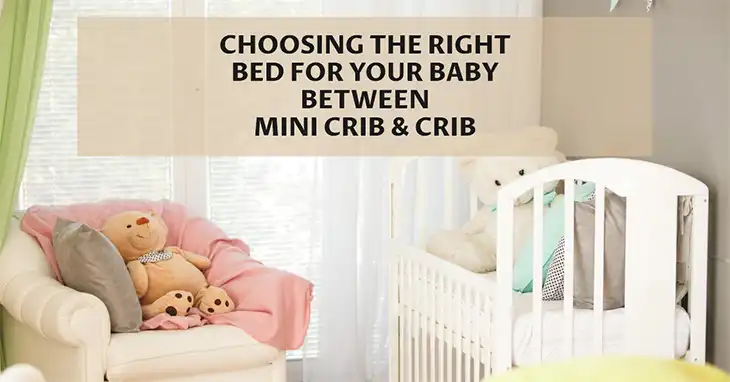
Side-by-Side Differences Between Mini Crib and Crib
Let’s start with a side-by-side comparison of the key differences between mini cribs and standard cribs.
Size
When it comes to size, the difference between a mini crib and a standard crib is pretty obvious. A mini crib is, well, mini! The standard mattress size for a mini crib is 38″ L x 24″ W, while a standard crib mattress measures 27 ¼ inches x 51 ⅝ inches. As for thickness, mini crib mattresses tend to be lower, around 3″ – 4″ high and no higher than 5″, while standard crib mattresses can be up to 6 inches thick.
They say good things come in small packages, but when it comes to cribs, bigger might be better… or at least more spacious for your little one to practice their gymnastic routines!
Space Required
Given their compact size, mini cribs are a space-saving dream for parents living in small apartments, tiny homes, or even those who want to co-sleep with their baby in the same room. They can easily fit into nurseries, bedrooms, or even living rooms without overwhelming the space. In contrast, standard cribs require more floor space and may not be the best choice for those with limited square footage.
If you’re living in a shoebox, a mini crib might be the only way to ensure your baby doesn’t become a contortionist before they can even crawl!
Weight Capacity
While mini cribs are designed for babies, they do have weight limits. Cribs generally have a weight capacity of 35-50 pounds, while the mini crib weight limit would be between 22 and 40 pounds. This means that once your little one starts hitting those growth spurts, you may need to transition them to a standard crib or a bigger bed sooner than you’d like.
At least with a mini crib, your baby won’t be able to sneak in a pet elephant for a sleepover!
Portability
One of the biggest advantages of mini cribs is their portability. These compact sleeping spaces are often designed with wheels or foldable frames, making it easy to move them from room to room or even take them on the road. Standard cribs, on the other hand, are generally more cumbersome and challenging to move around, especially if you have narrow doorways or tight spaces.
With a mini crib, you can easily take your baby on a cross-country road trip… or at least to the living room for a change of scenery!
Usage Duration
While mini cribs are an excellent space-saving solution, they do have a shorter lifespan when it comes to usage. Most babies outgrow mini cribs by 18-24 months, whereas standard cribs can typically accommodate your little one until they’re around 3-4 years old. This means you may need to invest in a new sleeping arrangement sooner with a mini crib.
Summary
| Aspect | Mini Crib | Standard Crib |
| Size | 38″ L x 24″ W Mattress Thick: 3″ – 4″, Max: 5″ | 27 ¼” x 51 ⅝” Mattress Thick: Up to 6″ |
| Space Required | Ideal for small spaces like apartments or co-sleeping arrangements | Requires more floor space, may not be suitable for small apartments or tight spaces. |
| Weight Capacity | Typically 22-40 pounds. | Generally 35-50 pounds. |
| Portability | Designed with wheels or foldable frames for easy movement. | More cumbersome and less portable compared to mini cribs. |
| Usage Duration | Outgrown by 18-24 months, shorter lifespan. | Can accommodate until 3-4 years old, longer usage duration. |
Pros and Cons of Mini Crib and Crib
To make your decision even easier, let’s take a look at the pros and cons of both mini cribs and standard cribs.
Mini Crib
| Pros | Cons |
| Mini cribs are perfect for small nurseries, apartments, or co-sleeping arrangements. | Most babies outgrow mini cribs by 18-24 months, necessitating a replacement. |
| Many mini cribs come with wheels or foldable designs, making them easy to move around. | Due to their non-standard size, mini crib mattress options can be limited. |
| Mini cribs are generally less expensive than standard cribs, making them budget-friendly. | Mini cribs typically don’t offer the option to convert into a toddler or full-size bed. |
| Mini cribs can be a great solution for having your baby sleep in your room. |
Standard Crib
| Pros | Cons |
| Standard cribs can accommodate your child until they’re around 3-4 years old. | Standard cribs take up more floor space compared to mini cribs, which can be challenging in smaller homes. |
| Standard cribs have a wider selection of mattress options due to their standard size. | Standard cribs are generally less portable than mini cribs due to their size and weight. |
| Many standard cribs can convert into a toddler bed, day bed, or full-size bed, extending their lifespan. | Standard cribs tend to be more expensive than mini cribs, which may be a concern for budget-conscious parents. |
When and Which One to Choose Between Mini Crib and Crib
Now that we’ve covered the key differences, pros, and cons, let’s dive into when you should consider each option.
Mini Crib
A mini crib could be the perfect choice if:
- Small spaces: You live in a small apartment, tiny home, or have a nursery with limited floor space.
- Frequent movement: You plan to move your baby’s sleeping arrangement from room to room frequently or travel often.
- Budget: You’re on a tight budget and need a cost-effective sleeping solution for your little one.
Standard Crib
On the other hand, a standard crib might be the way to go if:
- Long-term use: You want a sleeping arrangement that can accommodate your baby for a longer period, typically until they’re around 3-4 years old.
- Variety of mattresses: You want more options when it comes to choosing a mattress for your baby’s crib.
- Toddler bed conversion: You’re interested in a crib that can convert into a toddler bed or even a full-size bed, extending its lifespan and saving you money in the long run.
Conclusion
At the end of the day, the choice between a mini crib and a regular crib comes down to your specific needs, living situation, and budget. There’s no one-size-fits-all solution when it comes to baby gear. Trust your gut and go with the option that feels right for your family.
If you’re still feeling unsure or have any additional questions, don’t hesitate to ask. I’m here to help you make the best decision for your little bundle of joy. Parenthood is a wild ride, but with the right tools and a little humor, we’ll all make it through (relatively) unscathed!

